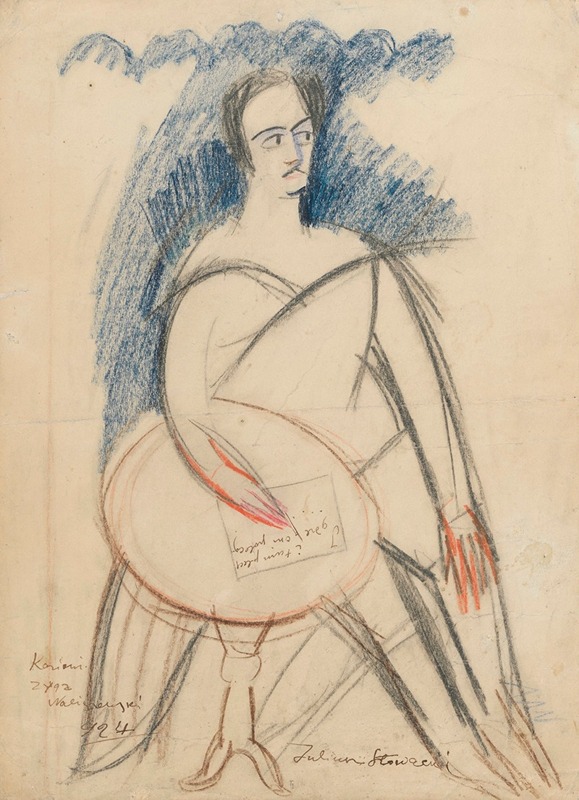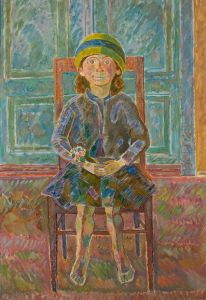
Juliusz Słowacki
A hand-painted replica of Zygmunt Waliszewski’s masterpiece Juliusz Słowacki, meticulously crafted by professional artists to capture the true essence of the original. Each piece is created with museum-quality canvas and rare mineral pigments, carefully painted by experienced artists with delicate brushstrokes and rich, layered colors to perfectly recreate the texture of the original artwork. Unlike machine-printed reproductions, this hand-painted version brings the painting to life, infused with the artist’s emotions and skill in every stroke. Whether for personal collection or home decoration, it instantly elevates the artistic atmosphere of any space.
"Juliusz Słowacki" by Zygmunt Waliszewski is a notable painting that captures the likeness of one of Poland's most revered Romantic poets, Juliusz Słowacki. Zygmunt Waliszewski, the artist behind this work, was a prominent figure in the Polish art scene, known for his contributions to the modernist movement in the early 20th century. His works often reflect a blend of traditional and avant-garde styles, showcasing his versatility and deep understanding of both historical and contemporary art forms.
Juliusz Słowacki, the subject of the painting, was a significant literary figure in Poland, often compared to other Romantic poets such as Adam Mickiewicz. Born in 1809, Słowacki's works are characterized by their exploration of national identity, freedom, and the human condition, themes that resonated deeply during the period of Poland's partitions. His poetry and plays have left a lasting impact on Polish literature and culture, making him an enduring symbol of Polish Romanticism.
Waliszewski's portrayal of Słowacki is not just a mere representation of the poet's physical appearance but also an artistic interpretation that seeks to capture the essence of his literary genius. The painting is believed to reflect Waliszewski's admiration for Słowacki's work and his contribution to Polish culture. Through his use of color, composition, and form, Waliszewski conveys a sense of depth and introspection, inviting viewers to engage with the poet's legacy on a more personal level.
The painting is part of a broader tradition of Polish art that seeks to celebrate and immortalize the country's cultural icons. By choosing Słowacki as his subject, Waliszewski aligns himself with a lineage of artists who have used their craft to honor Poland's rich literary and artistic heritage. This work is a testament to the enduring influence of Słowacki's poetry and the continued relevance of Romantic ideals in Polish art.
Zygmunt Waliszewski was born in 1897 and became a key figure in the Polish avant-garde movement. His artistic journey was marked by experimentation and a willingness to push the boundaries of conventional art forms. Waliszewski's works often incorporate elements of Cubism, Expressionism, and other modernist styles, reflecting his diverse influences and innovative spirit. Despite the challenges posed by the political and social upheavals of his time, Waliszewski remained committed to his artistic vision, producing works that continue to be celebrated for their originality and emotional depth.
The painting "Juliusz Słowacki" is an example of Waliszewski's ability to blend traditional portraiture with modernist techniques, creating a work that is both timeless and contemporary. It serves as a bridge between the past and the present, highlighting the enduring power of art to capture the complexities of human experience.
In summary, "Juliusz Słowacki" by Zygmunt Waliszewski is a significant work that pays homage to one of Poland's greatest poets. Through his masterful use of color and form, Waliszewski not only captures the likeness of Słowacki but also conveys the depth of his literary contributions. This painting stands as a testament to the enduring legacy of both the poet and the artist, reflecting the rich cultural tapestry of Poland's artistic heritage.

















![Design for unidentified restaurant interior in blue and vermillion with mural featuring 2 female nudes and panel with tulip inserts.] [Drawing for ‘Dining Room’](/imgs/249301/s/winold-reiss-design-for-unidentified-restaurant-interior-in-blue-and-vermillion-with-mural-featuring-2-female-nudes-and-panel-with-tulip-inserts-drawing-for-dining-room-880480c5.jpg)
